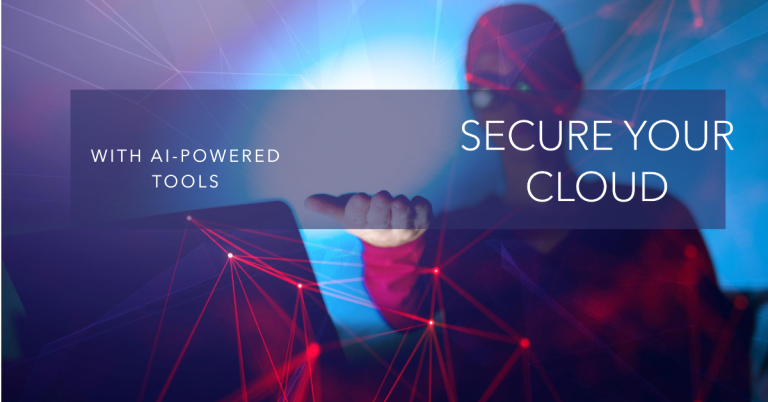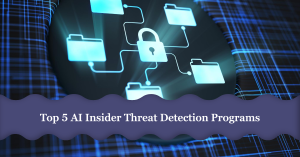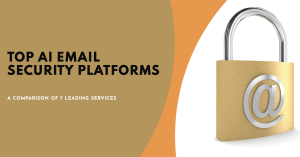Introduction
The rapid adoption of cloud computing has revolutionised how organisations store, manage, and access data. However, with this shift comes a host of new security challenges. As businesses migrate to the cloud, they must navigate an increasingly complex threat landscape characterised by sophisticated cyberattacks, compliance requirements, and the need for real-time security management. This is where Top AI-powered Cloud Security Posture Management tools (CSPM) come into play.
CSPM tools help organizations maintain and improve their cloud security by continuously monitoring their cloud environments, identifying potential risks, and ensuring compliance with security policies. In recent years, Artificial Intelligence (AI) has significantly enhanced the capabilities of these tools, providing automated threat detection, risk assessment, and remediation.
This article will explore the top AI-powered CSPM tools available today, examining their features, benefits, and potential drawbacks. We will also discuss how these tools can effectively integrate into your cloud security strategy.
Understanding Cloud Security Posture Management (CSPM)
What is CSPM?
Cloud Security Posture Management (CSPM) refers to a set of automated tools and practices designed to manage and improve the security posture of cloud environments. CSPM tools continuously monitor cloud infrastructure, identifying misconfigurations, compliance violations, and security risks. They provide real-time visibility into cloud resources’ security state, helping organisations mitigate potential threats before malicious actors can exploit them.
The Role of AI in CSPM
AI has transformed CSPM by introducing advanced capabilities such as machine learning-based anomaly detection, predictive analytics, and automated remediation. AI-powered CSPM tools can analyze vast amounts of data from various cloud environments, identify patterns, and detect potential threats that might go unnoticed by traditional security measures. They can also adapt to evolving threats, making them essential to a modern cloud security strategy.
Key Features of AI-Powered CSPM Tools
AI-powered CSPM tools come with several key features that enhance their effectiveness in securing cloud environments:
1. Automated Risk Assessment
AI-powered CSPM tools can automatically assess the security risks associated with cloud resources. They analyze configurations, access controls, and network settings to identify vulnerabilities and provide a risk score. This allows organizations to prioritize remediation efforts based on the severity of the risk.
2. Continuous Monitoring
Continuous monitoring is a critical feature of CSPM tools. AI enables these tools to monitor cloud environments in real time, detecting changes or anomalies that could indicate a security breach. This proactive approach helps prevent attacks by identifying potential threats before they can cause harm.
3. Anomaly Detection
AI-based anomaly detection leverages machine learning algorithms to identify unusual patterns or behaviours within cloud environments. By analyzing historical data and understanding standard patterns, these tools can detect deviations that may indicate a security incident, such as unauthorized access or data exfiltration.
4. Compliance Management
Maintaining compliance with industry standards and regulations is a significant challenge for organizations using cloud services. AI-powered CSPM tools can automate compliance checks, ensuring cloud environments adhere to security policies and regulatory requirements. They can also generate reports and alerts when compliance violations are detected.
5. Automated Remediation
Some AI-powered CSPM tools offer automated remediation capabilities. When a security issue is identified, these tools can immediately correct the problem, such as reverting misconfigurations, enforcing security policies, or isolating affected resources. This reduces the time it takes to respond to threats and minimizes the risk of a security breach.
6. Integration with DevOps
AI-powered CSPM tools can integrate seamlessly with DevOps workflows, ensuring security is embedded into the development process. They can scan code, configurations, and infrastructure as part of the CI/CD pipeline, identifying and addressing security issues before they reach production.
Benefits of AI-Powered CSPM Tools
The integration of AI into CSPM offers several significant benefits:
1. Enhanced Security
AI-powered CSPM tools provide a higher level of security by detecting and responding to threats more quickly and accurately than traditional methods. Their ability to identify zero-day vulnerabilities, insider threats, and advanced persistent threats (APTs) makes them invaluable for protecting cloud environments.
2. Reduced Manual Effort
Automating cloud security processes with AI reduces the need for manual intervention. This saves time and resources and minimizes the risk of human error, which is often a significant factor in security breaches.
3. Improved Compliance
Maintaining compliance with regulations like GDPR, HIPAA, and PCI-DSS is easier with AI-powered CSPM tools. They provide continuous compliance monitoring and reporting, ensuring that organizations can quickly identify and address compliance issues.
4. Scalability
AI-powered CSPM tools are designed to scale with your cloud environment. Whether you’re managing a small cloud deployment or an extensive, multi-cloud infrastructure, these tools can handle the complexity and volume of data, providing consistent security across all your cloud resources.
5. Proactive Threat Management
By identifying potential security risks before they can be exploited, AI-powered CSPM tools enable organizations to take a proactive approach to cloud security. This reduces the likelihood of successful cyberattacks and minimizes the impact of any incidents that do occur.
Top AI-Powered Cloud Security Posture Management Tools
Several AI-powered CSPM tools stand out due to their advanced features and capabilities. Below, we review some of the top tools available today:
1. Palo Alto Networks Prisma Cloud
Prisma Cloud, developed by Palo Alto Networks, is a comprehensive cloud security platform that offers AI-powered CSPM capabilities. It provides visibility and control across multi-cloud environments, including AWS, Azure, and Google Cloud.
Key Features:
- Unified Visibility: Prisma Cloud offers a single pane of glass for monitoring and managing security across multi-cloud environments.
- Automated Risk Assessment: The platform uses AI to assess security risks continuously and provides actionable insights to improve security posture.
- Compliance Management: Prisma Cloud automates compliance checks and provides real-time alerts for policy violations.
- Threat Detection: AI-driven threat detection identifies and responds to potential security incidents, including zero-day threats.
Pros:
- Extensive multi-cloud support.
- Strong focus on compliance and regulatory standards.
- Integration with Palo Alto’s broader cybersecurity ecosystem.
Cons:
- It can be complex to deploy and manage, particularly in large environments.
- Higher cost compared to some other CSPM solutions.
2. Microsoft Defender for Cloud
Microsoft Defender for Cloud is a native CSPM tool for Microsoft Azure, but it also supports AWS and Google Cloud environments. It uses AI to enhance security, providing continuous monitoring and automated threat detection.
Key Features:
- Integrated Security: Defender for Cloud integrates seamlessly with Azure services, providing end-to-end security across your cloud infrastructure.
- AI-Powered Threat Detection: The platform uses machine learning to identify real-time anomalies and potential threats.
- Compliance Management: Defender for Cloud offers built-in compliance management for significant regulations and standards.
- Security Recommendations: AI-driven security recommendations help organizations improve their security posture by addressing vulnerabilities and misconfigurations.
Pros:
- Native integration with Azure makes it ideal for organizations heavily invested in the Microsoft ecosystem.
- Comprehensive threat detection and response capabilities.
- User-friendly interface with detailed reporting.
Cons:
- Limited support for non-Microsoft cloud environments.
- It may require additional configuration for complex multi-cloud environments.
3. Check Point CloudGuard
Check Point CloudGuard is a robust CSPM solution that provides AI-powered security for public, private, and hybrid cloud environments. It offers advanced threat prevention, compliance management, and automated remediation.
Key Features:
- Unified Security Management: CloudGuard provides a unified platform for managing security across multiple cloud environments.
- AI-Driven Threat Prevention: The platform uses AI to detect and prevent many threats, including malware, ransomware, and phishing attacks.
- Compliance Automation: CloudGuard automates compliance checks and provides detailed reports for regulatory requirements.
- Automated Remediation: The tool can automatically remediate security issues, reducing the need for manual intervention.
Pros:
- Strong threat prevention capabilities.
- Supports many cloud environments, including public, private, and hybrid clouds.
- Automated remediation reduces response time to security incidents.
Cons:
- It may require significant customization to fit specific organizational needs.
- Higher cost than other CSPM tools, particularly for small to mid-sized businesses.
4. Lacework
Lacework is a cloud security platform that leverages machine learning and AI to provide CSPM, workload security, and compliance management. It offers comprehensive visibility into cloud environments and automates detecting and remedying security risks.
Key Features:
- AI-Powered Anomaly Detection: Lacework uses machine learning to detect unusual behaviour and potential threats in real-time.
- Compliance Management: The platform automates compliance checks and provides detailed reports for various regulatory frameworks.
- Workload Security: Besides CSPM, Lacework provides security for cloud workloads, including containers and Kubernetes.
- Integration with DevOps: Lacework integrates with DevOps tools and workflows, ensuring that security is embedded into the development process.
Pros:
- Strong focus on anomaly detection and workload security.
- User-friendly interface with detailed dashboards and reports.
- Scalable across different cloud environments and workloads.
Cons:
- It may require a learning curve to utilize its advanced features fully.
- Higher cost for organizations with extensive cloud environments.
5. IBM Security Guardium Insights for Cloud Pak for Security
IBM Security Guardium Insights for Cloud Pak for Security is an AI-powered CSPM tool designed to protect cloud environments and ensure compliance with regulatory requirements. It offers advanced threat detection, risk assessment, and automated remediation.
Key Features:
AI-Powered Risk Assessment**: Guardium Insights uses AI to assess security risks and provide actionable insights to improve cloud security posture.
- Compliance Automation: The platform automates compliance checks and provides detailed reports for regulatory standards.
- Integrated Threat Detection: AI-driven threat detection identifies and responds to potential security incidents in real time.
- Data Security: Guardium Insights also focuses on data security, protecting sensitive information stored in the cloud.
Pros:
- Strong focus on data security and compliance.
- Integration with IBM’s broader security solutions and services.
- Comprehensive risk assessment and threat detection capabilities.
Cons:
- It may require significant configuration and customization.
- Higher cost, particularly for organizations not already using IBM products.
Choosing the Right AI-Powered CSPM Tool
Selecting the right AI-powered CSPM tool depends on several factors, including the size of your organization, the complexity of your cloud environment, and your specific security needs. Here are some considerations to keep in mind:
1. Cloud Environment
Consider your organization’s cloud environments. Some CSPM tools are better suited for specific cloud providers, such as AWS, Azure, or Google Cloud. Ensure that your chosen tool supports your cloud infrastructure and provides comprehensive security coverage.
2. Security Needs
Identify your organization’s specific security needs. If you require advanced threat detection, choose a tool that excels in that area. Consider a CSPM tool with robust compliance management features if compliance is a priority.
3. Integration
Ensure the CSPM tool integrates seamlessly with your existing IT and security infrastructure. This includes compatibility with DevOps workflows, CI/CD pipelines, and other security tools.
4. Ease of Use
AI-powered CSPM tools can be complex, so choosing a solution your team can manage effectively is essential. Look for tools with intuitive interfaces, comprehensive documentation, and strong customer support.
5. Cost
Consider the cost of the CSPM tool to your budget. While some high-end solutions offer advanced features, they may be out of reach for smaller organizations. It’s essential to balance the need for robust security with the available budget.
Implementation Best Practices: Top AI-Powered Cloud Security Posture Management Tools
Implementing an AI-powered CSPM tool requires careful planning and execution. Here are some best practices to ensure a successful deployment:
1. Define Your Objectives
Before implementing the tool, clearly define what you hope to achieve. Are you primarily focused on improving security, ensuring compliance, or both? Your objectives will guide the selection process and inform how you configure and use the tool.
2. Start with a Pilot Program
Begin with a pilot program to test the tool in a controlled environment. This allows you to evaluate its effectiveness and make necessary adjustments before a full-scale deployment.
3. Monitor and Adjust
AI-powered CSPM tools often require ongoing monitoring and adjustments to perform optimally. Regularly review the tool’s performance, update its machine learning models, and refine its configurations based on your cloud environment’s evolving needs.
4. Train Your Team
Ensure your IT and security teams are adequately trained to use the tool. This includes understanding its features, interpreting its alerts, and responding to potential threats.
5. Stay Up-to-Date
Cyber threats are constantly evolving, and so should your tools. Keep your AI-powered CSPM tool up-to-date with the latest threat intelligence and software updates.
Conclusion
AI-powered Cloud Security Posture Management (CSPM) tools represent a significant advancement in cloud security. By leveraging the power of AI, these tools provide enhanced visibility, automated threat detection, and proactive risk management for cloud environments. They are essential for organizations looking to maintain a strong security posture, ensure compliance, and protect their cloud assets from an increasingly sophisticated threat landscape.
Choosing the right top AI-powered cloud security posture management tools requires careful consideration of your organization’s specific needs, cloud environment, and budget. By following best practices for implementation and staying informed about the latest developments, you can effectively integrate AI-powered CSPM into your cloud security strategy and safeguard your digital infrastructure.
Links in this article may be affiliate links, meaning they could generate compensation to us without any additional cost to you should you choose to purchase a paid plan. These are products we have personally used and confidently endorse. It’s important to note that this website does not offer financial advice. You can review our affiliate disclosure in our privacy policy for more information.




